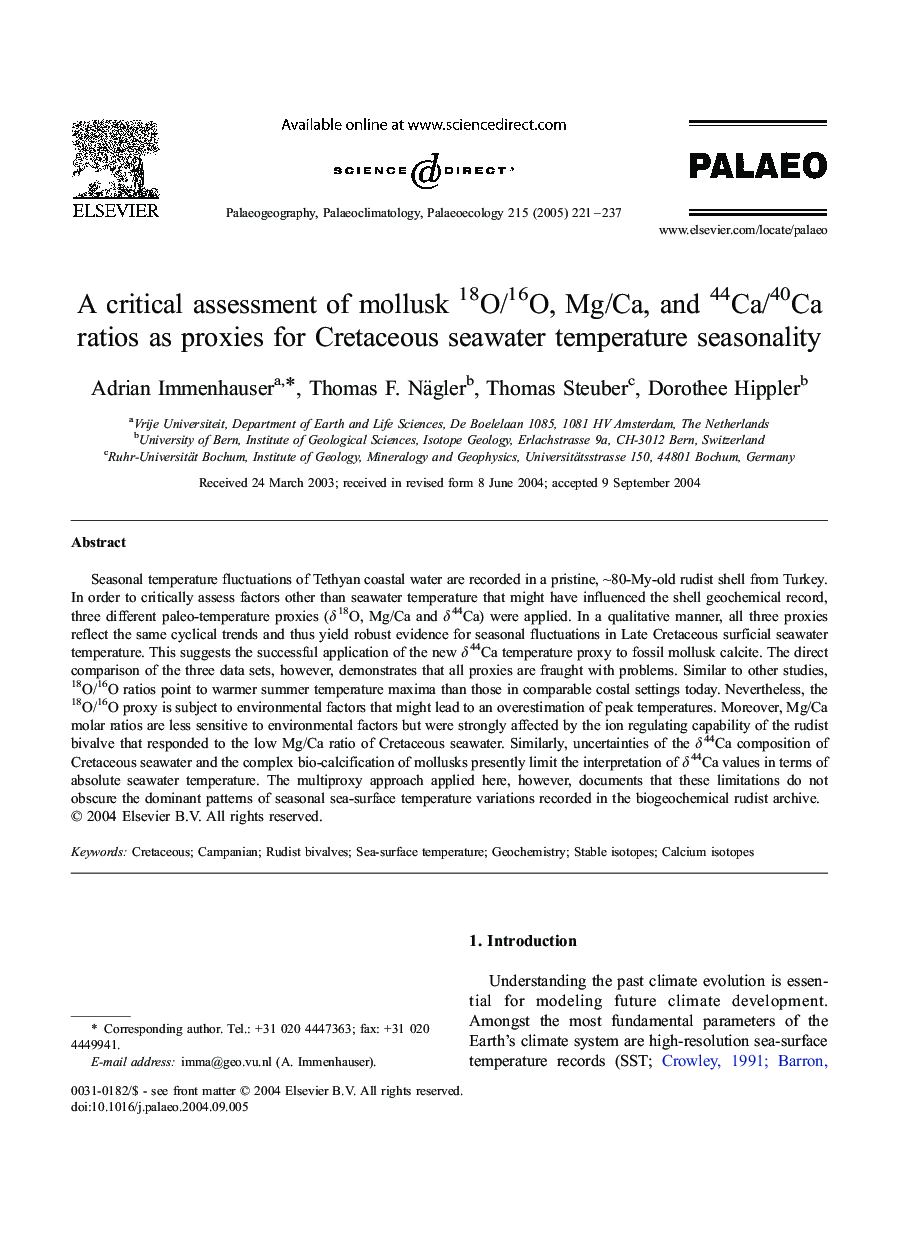| Article ID | Journal | Published Year | Pages | File Type |
|---|---|---|---|---|
| 9463107 | Palaeogeography, Palaeoclimatology, Palaeoecology | 2005 | 17 Pages |
Abstract
Seasonal temperature fluctuations of Tethyan coastal water are recorded in a pristine, â¼80-My-old rudist shell from Turkey. In order to critically assess factors other than seawater temperature that might have influenced the shell geochemical record, three different paleo-temperature proxies (δ18O, Mg/Ca and δ44Ca) were applied. In a qualitative manner, all three proxies reflect the same cyclical trends and thus yield robust evidence for seasonal fluctuations in Late Cretaceous surficial seawater temperature. This suggests the successful application of the new δ44Ca temperature proxy to fossil mollusk calcite. The direct comparison of the three data sets, however, demonstrates that all proxies are fraught with problems. Similar to other studies, 18O/16O ratios point to warmer summer temperature maxima than those in comparable costal settings today. Nevertheless, the 18O/16O proxy is subject to environmental factors that might lead to an overestimation of peak temperatures. Moreover, Mg/Ca molar ratios are less sensitive to environmental factors but were strongly affected by the ion regulating capability of the rudist bivalve that responded to the low Mg/Ca ratio of Cretaceous seawater. Similarly, uncertainties of the δ44Ca composition of Cretaceous seawater and the complex bio-calcification of mollusks presently limit the interpretation of δ44Ca values in terms of absolute seawater temperature. The multiproxy approach applied here, however, documents that these limitations do not obscure the dominant patterns of seasonal sea-surface temperature variations recorded in the biogeochemical rudist archive.
Keywords
Related Topics
Physical Sciences and Engineering
Earth and Planetary Sciences
Earth-Surface Processes
Authors
Adrian Immenhauser, Thomas F. Nägler, Thomas Steuber, Dorothee Hippler,
